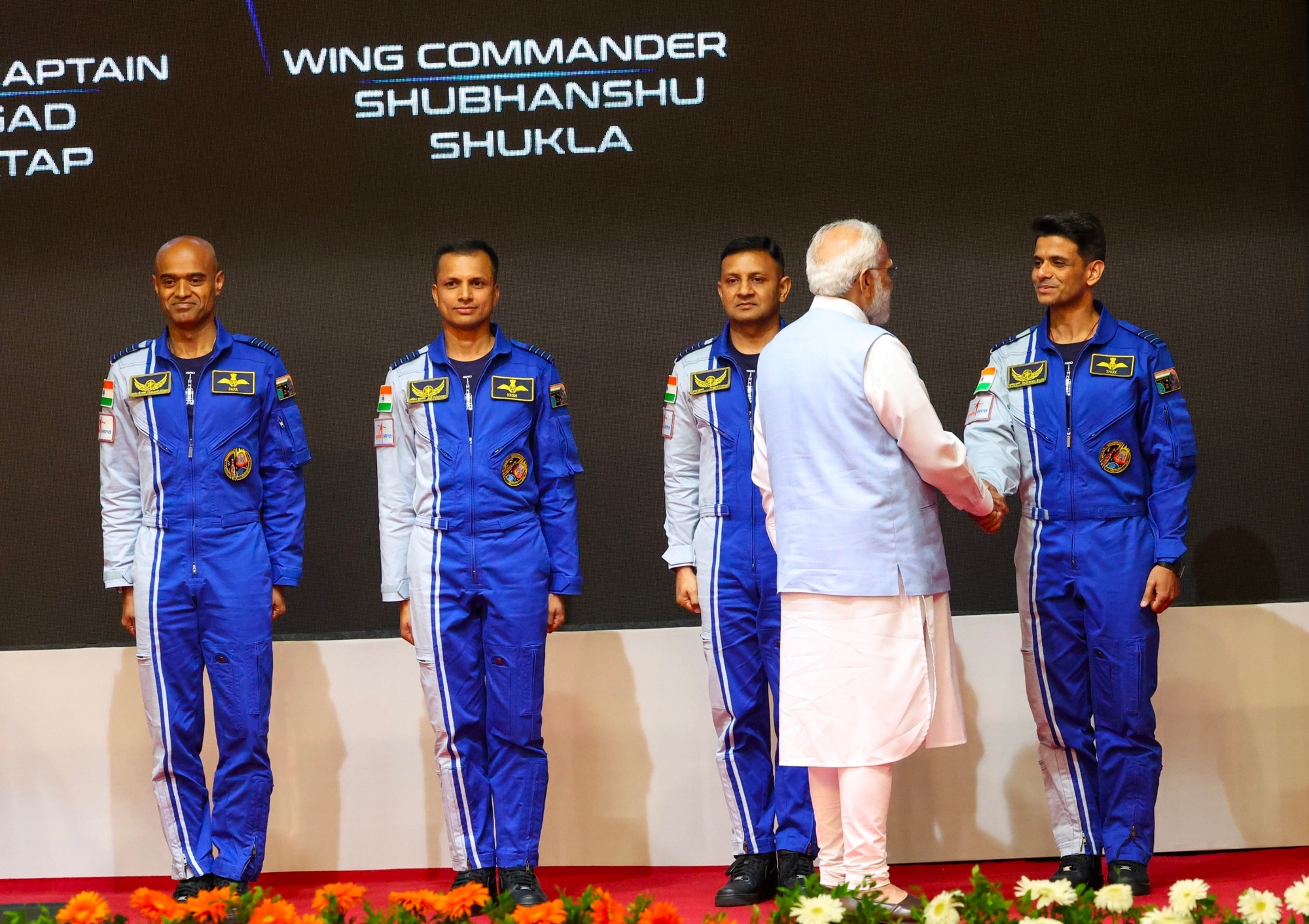Products You May Like
WASHINGTON — The governments of the United States and India announced June 17 they are moving ahead with cooperation on human spaceflight that would include flying an Indian astronaut to the International Space Station, although with few details on who would fly and when.
The White House released a fact sheet regarding a meeting of the U.S.-India initiative on Critical and Emerging Technology (iCET), held June 17 in New Delhi and chaired by the national security advisers of the two countries. The statement highlighted the progress made by the two countries in cooperation in various technology sectors.
In space, the fact sheet hailed “securing a carrier for the first-ever joint effort between NASA and ISRO astronauts at the International Space Station.” This appeared to reference an announcement last June that the United States would train Indian astronauts with the goal “of mounting a joint effort to the International Space Station in 2024.”
The fact sheet did not disclose who the carrier for the mission would be or when the mission would fly. In May, Eric Garcetti, U.S. ambassador to India, stated that the mission would take place this year. A NASA spokesperson, though, said that details about the flight were still being finalized, and only after that would NASA “determine the mission timelines and training modules required” for such a mission.
The most likely scenario for flying an Indian astronaut to the ISS would be through a private astronaut mission, which would spend up to two weeks at the station. The next such mission is Axiom Space’s Ax-4, scheduled for late this year, although the company has not disclosed the crew for that mission or training plans.
The fact sheet noted that the two countries had completed a “Strategic Framework for Human Spaceflight Cooperation” but did not disclose details about the document. The joint statement last year said that framework would be completed by the end of 2023. They also said they would “work toward commencing advanced training for ISRO astronauts at the NASA Johnson Space Center.”
The countries also are exploring “opportunities for India’s participation in the Lunar Gateway Program, as well as joint avenues for collaboration in other space technologies.” The NASA-led lunar Gateway currently includes the Western partners on the ISS as well as the United Arab Emirates, which agreed in January to develop an airlock module.
India and the United States emphasized cooperation on defense space topics in the statement. India was an observer in the Global Sentinel space security exercise held in February by U.S. Space Command, and will be a participant in the exercise next year. The two countries also discussed space defense cooperation at the Advanced Domains Defense Dialogue in May that included a space tabletop exercise. Two Indian startups, 114ai and 3rdiTech, have partnered with the U.S. Space Force on space situational awareness technologies.
NASA and the Indian space agency ISRO have been cooperating for several years on the NASA-ISRO Synthetic Aperture Radar (NISAR) Earth science mission, which the fact sheet noted. NISAR was scheduled for launch earlier this year on an Indian GSLV rocket, but was postponed to modify its large deployable antenna to protect it from higher-than-expected temperatures when stowed. Neither agency, not the White House fact sheet, have disclosed a new launch date for NISAR.
